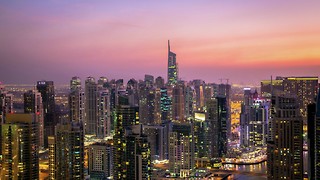Noise
Writing from New Delhi, Aliya Ram examines the rise of the cult figure in Indian protests in the wake of public outrage at the gang-rape of a young woman

In India, the implementation of change (or even the recognition of a problem) still requires a noisy mess from both the media and protestors. Occasionally a political radical will attempt to sort something out but his efforts are often embroiled in dirty controversies. Where funds are not misappropriated they are used for bribes – in India it is implicit that a rising politician must bribe in order to achieve anything. Despite the Right to Information Act, however, it remains difficult to obtain proof of this corrupt behaviour as intimidation and bureaucracy still obstruct people’s access to information. Yet there is a widespread awareness of what is going on – a form of knowledge which is not empowering. Taking the moral high-ground when things go wrong is not easy for the Indian public.
Yet when a public bus turned into the site of a horrific six man strong gang-rape, the news went viral and the public took to the streets with signs saying: “People should make them [the culprits] impotent” and “For all rapists life imprisonment till death, after chemical castration”. The Indian media has not held back in expressing its overt outrage. Headlines Today, a popular Indian news channel in English, repeatedly flashed “Our Daughters Betrayed” on its screen as its reporters described protestor’s “demands” with a conviction bordering on advocation ( Although it is worth remembering that the protestors are not organised and therefore do not have demands per se). The Hindustan Times even replaced the banner under its masthead with ‘Hindustan Times against rape’ the day the news broke. The Delhi Police Commissioner Neeraj Kumar has gone so far as to say that the media is fuelling the violence that took over the protests on the weekend, a fact that the Hindustan Times sneered at in its editorial “our take”.
Gender asymmetries – although not as bad as in other parts of South Asia – are nevertheless culturally institutionalised in India, for example through the still almost concrete expectation that brides give their husbands dowries. These asymmetries are not merely the remnants of an archaic tradition: national crime statistics show that 89.2% of violent crimes in 2011 were perpetrated against women. So why the sudden interest when these issues have been around for so long?
In a country where social media has not yet pervaded society (only 5.3% of the Indian population has Facebook compared with 53.4% in the UK) the public relies on the single example over conclusions drawn from multiple sources of information. In the past seven years there have been three enormous protest campaigns in India’s capital on big issues for which one person (Jessica Lal / Anna Hazare / the gang-rape victim) formed a powerful epicenter. In India the revelation that sparks the action is only ever gestural. Corruption was known to be a problem long before Anna Hazare was put in prison and hundreds of thousands raised their voices. Of course in comparison to the UK, protests in India always seem enormous thanks to the size of the population (many of whom are unemployed and are thus free to participate). Nevertheless it is unique and remarkable how in India such hoards ventriloquise through the voice of a single person who cannot speak.
The protests might be disorganized – indeed, a leader on the ground expressed frustration at the disintegration of the protesting crowd into separate groups each with their own chants when they “should [have] be[en] working together” – but this central unnamed figure prevents them falling apart completely. The different groups coalesce around the gang-rape victim who takes on the role of a martyr (understandably, given that she is still in hospital with only 5% of her intestines left inside her) and are thus protected from the factioning that has been the downfall of many a worthwhile cause. The need for an idol to rally around is perhaps an off-cut of the celebrity culture that has made gods out of actors and cricket-players. Regardless of its dubious foundations, it is only helpful in legitimising sudden public action after years of voluntary myopia.
The media and the public’s duty to be active is more urgent in India than it is in the UK. That India still has some deeply problematic social and political habits, which result in such awful stories is evident, and has kept the country relegated to the third world. Yet that it is a democracy is not something that should be forgotten. It will no doubt be years before the Indian police stop using their laathis to mow down protestors. Yet as long as the media and public congregate around the damaged few who can hold the moral high ground, the collective breath of their clamouring voices might blow away some of India’s smog.
Update 29/12: The victim passed away in the early hours of this morning.
 Features / The community Cambridge accommodation creates (and doesn’t)9 August 2025
Features / The community Cambridge accommodation creates (and doesn’t)9 August 2025 News / Trinity sells O2 Arena lease for £90m12 August 2025
News / Trinity sells O2 Arena lease for £90m12 August 2025 Lifestyle / An ode to college accommodation11 August 2025
Lifestyle / An ode to college accommodation11 August 2025 Sport / ‘A full-time job with overtime’: should disparities change the way we approach Bumps?6 August 2025
Sport / ‘A full-time job with overtime’: should disparities change the way we approach Bumps?6 August 2025 Features / Incoming freshers and their hopes, fears and expectations for Cambridge 12 August 2025
Features / Incoming freshers and their hopes, fears and expectations for Cambridge 12 August 2025










